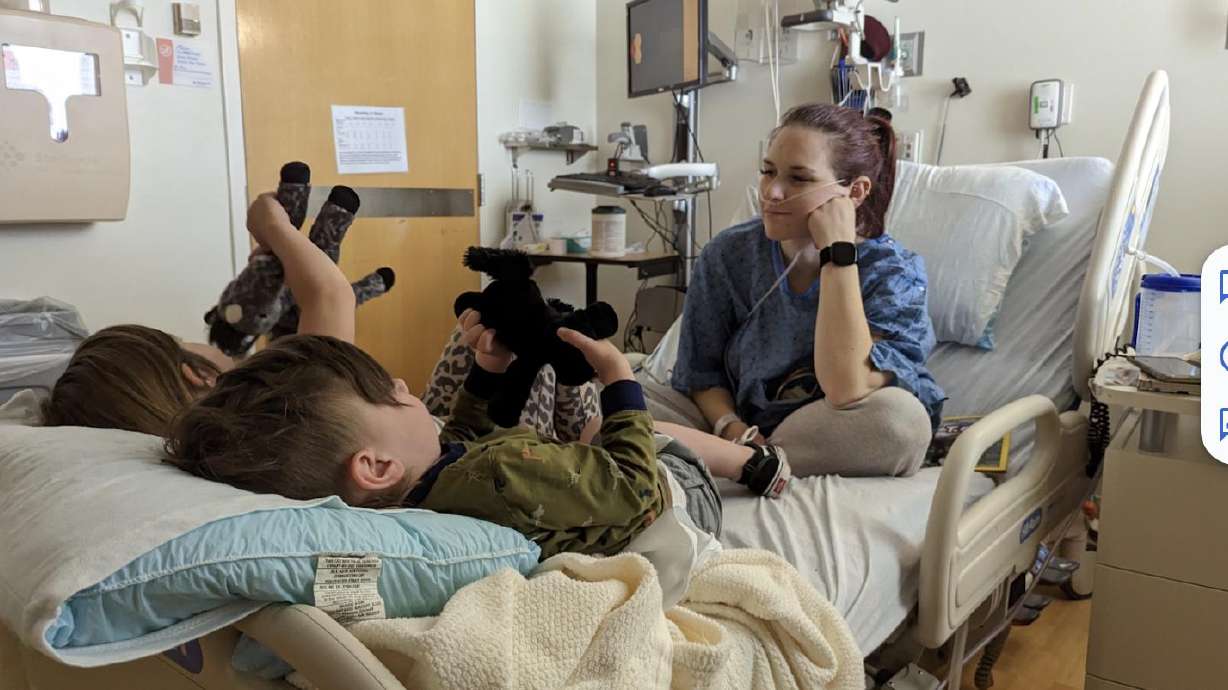Estimated read time: 4-5 minutes
This archived news story is available only for your personal, non-commercial use. Information in the story may be outdated or superseded by additional information. Reading or replaying the story in its archived form does not constitute a republication of the story.
One in three Utah homes have a high level of radioactive gas that causes lung cancer—and most Utahns don't know it.
What radon is
Radon is a naturally occurring radioactive gas highly prevalent in Utah due to the state's geography. This gas is created when uranium in the ground decays, and uranium is present throughout the state.
While it's not dangerous to our lungs when we breathe it outside, it can become dangerous if it gets trapped inside our homes and is breathed in over a prolonged period.
Radon exposure causes 21,000 lung cancer deaths per year and should not be taken lightly. Conservatively, 33% of homes tested in Utah have high radon levels, but some studies show upwards of over 50% of Utah homes.
Why you should care
Radon is the leading cause of lung cancer in non-smokers and the second leading cause of lung cancer in smokers. Even more, radon-induced lung cancer is completely preventable.
"Most of the things we deal with in medicine, we're always talking about a small chance of making a difference. If you've got a one in three chance of having a problem in your house today, it's something that you should do something about," explained Dr. Wallace Akerley, a medical oncologist at the Huntsman Cancer Institute.
Akerley's medical advice is something Todd Smith, a Saratoga Springs resident, wished he'd heard years ago. Smith never thought he would say goodbye to his wife at such an early age. "Losing somebody to something like lung cancer is devastating. But, at the same time, there are also things you can do to avoid something like that," Smith shared.
Since Rachel's death, Todd has been encouraging Utah residents to test their homes for radon. "Something like radon gas is something that you can avoid, that we can actually test for. If I could go back, if I could have prevented it, if there was anything I could have done, it would be worth it." Smith had a radon mitigation system installed in his home and encourages all Utah residents to take radon seriously. See more of Todd and Rachel's story here.

Why you haven't heard of radon
"Why do I not know about radon?" is one of the most common questions that non-smoking lung cancer patients ask Eleanor Divver, Radon Project Coordinator at the Utah Department of Environmental Quality. "Why have we not done more to educate the public about what radon is, that it's easy to test for, that it's easy to fix?"
The answer to Divver's question isn't simple, but one thing is certain: Every Utahn should test their home for radon. According to the EPA, it's also important to test every two years or any time a major structural change is made to your home. "It is imperative to test for radon in Utah," explained Divver. "We're a mining state. There's lots of uranium in the soil. So we need to make sure we're testing our homes."
It's heartbreaking to share with loved ones and the individuals surviving cancer to say to them, yeah, if you would have just tested for radon, you might have protected you and your family from this lung cancer diagnosis.
–Eleanor Divver, Radon project coordinator, Utah Department of Environmental Quality
Divver explained that radon is measured in picocuries per liter of air or pCi/L. For example, the outside air averages 0.4 pCi/L. While there is no safe radon level, most experts agree the outside air does not pose a significant health threat. Conversely, the average indoor radon level in Utah is 5.3 pCi/L. That level has the equivalent lung cancer risk of smoking half a pack of cigarettes every day.
With so many homes in Utah having dangerous radon levels, Divver frequently has difficult conversations with residents who have been diagnosed with non-smoking lung cancer. "It's heartbreaking to share with loved ones and the individuals surviving cancer to say to them, yeah, if you would have just tested for radon, you might have protected you and your family from this lung cancer diagnosis."
What you can do
The first and most important step is to test for radon. According to Divver, you should first perform an activated charcoal test to find your home's radon level. You can get one free test from UtahRadon.org, mailed directly to you. The shipping, kit, and lab fees are all prepaid so you don't have to worry about any cost. After you complete the simple test, you'll get your home's results in 7–14 days. If your home test results are high, a radon mitigation system can be installed to reduce the amount of radon to a safer level.
Radon is a danger to all Utahns, but you have the opportunity to take action now and protect yourself and your loved ones from radon-induced lung cancer. To get your free radon test kit, go to UtahRadon.org.








